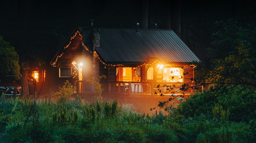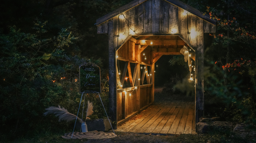
Article courtesy of Garden Gate Magazine
Have you ever watched a robin splashing in a birdbath? Or seen a young bird step from a branch for its very first flight? If you have, you know what a joy watching our feathered neighbors can be. What you might not realize is that there are simple things, like food, water and shelter, you can do to make your yard a more enticing place for all kinds of birds.
Food
There are two ways to present food — on a plant or in a feeder. Birds will like both, especially if you live where snow covers the ground in winter. Wild birds get about 75 percent of their food from plants they find as they travel around. The rest comes from feeders. Add in a feeder or two and your garden will quickly become a five-star bird buffet.Because plants bloom and set seed or fruit at different times, you’ll need to have a variety of choices. Start with a combination of fruiting trees, such as summer-fruiting serviceberry and late-fall crabapples. Add in some shrubs that have fruit. Holly and many of the viburnums are good choices. Lots of annuals and perennials produce seedheads after the flowers fade, too. Just remember not to deadhead them late in the season. Sure, you may not get as many late flowers, but you will get more birds stopping by to see what’s for dinner.

Colorful crab apples and other fruit are a favorite of cedar waxwings.
See also Your Seasonal Garden Checklist
Water
One of the very best ways to bring in lots of birds is to provide fresh water all year around. Yes, even in winter, birds need moisture. No, they won’t freeze if they get wet, or even stick to metal feeders or wires.
A simple birdbath is a good place to start. It shouldn’t be more than 3 inches deep or the birds won’t find it comfortable. You can also toss in a few small rocks for the birds to perch on. Make sure to keep the bowl filled with clean water. If you see either the bowl or the water looking dirty, dump it and use a stiff brush to remove dirt and debris. Then refill the bowl with clean water. No need to use soap, just water and a brush will do the trick.
Choose a location for the birdbath that has trees and shrubs nearby so birds waiting in line can perch. And try to place the birdbath where predators can’t hide in dense grass or flowers. You’re feeding birds, not the neighbor’s cat.
A dripper, like the one in the birdbath above, helps birds find the water. The gentle dripping makes a sound, and the water moves so birds can spot it more easily. Or if you want something more elaborate, build a water feature for your garden. A shallow pond with a bubbler or fountain would be perfect.
Finding water in winter can be a challenge for many birds. They get moisture from snow and ice, but open water is best. Keep water from freezing by installing an electric heating element that can be placed in the bowl of the birdbath. Even easier are birdbaths with bowls that have the heating element built right in. All you have to do is plug them in and keep the bowl clean and filled.

Moving water is best, and you can add a dripper like this one to almost any type of birdbath. It makes the water move a bit and adds sound so the birds can find it much more easily.
Shelter
Nobody wants to be left out in the cold. Even though birds that stick around for the winter are used to it, they still like a snug place where they can settle in for the night. Offer a spot where they feel safe and secure from predators. Evergreens, like the ones above, or other densely branched trees and shrubs are ideal. Try to place feeders and watering spots near plants like these. They’ll offer protection and a place to perch for birds that are waiting to eat or drink. And birds that are finished dining will also have a spot to preen and dry off.Trees and shrubs, especially evergreens, provide a secure place for birds to nest and raise their young, too. Since some birds like to nest high up and others low to the gound, it’s a good idea to plant a variety of trees.

Evergreens provide excellent protection from harsh elements and predators. And most evergreens have dense branches, so birds often prefer them for nesting.










